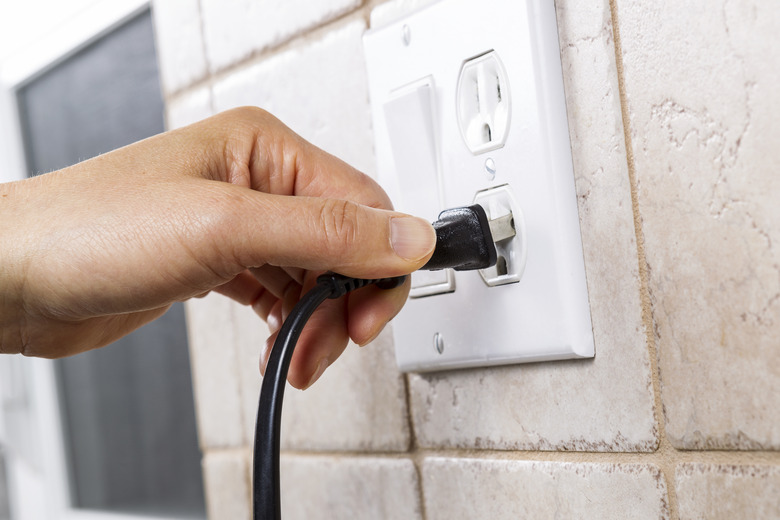How To Fix An Outlet Overload
We may receive a commission on purchases made from links.
As technology advances, the possibility of an overloaded outlet increases. Modern life includes tons of household appliances, and many older homes simply weren't built to accommodate all the things we plug in today. Plugging in too much stuff can cause the outlet to overload, and hopefully, just blow a fuse or trip a breaker. Overloaded outlets can lead to a fire, however, so it's important to fix the problem rather than just flipping a circuit breaker back on.
Electrical Overload Definition
Electrical Overload Definition
An electrical overload occurs when an outlet is trying to draw more power than it should. Multiple appliances operating on the same outlet or circuit may need more electricity than the outlet can provide. When this happens, the excess electricity will blow a fuse or open a circuit breaker, depending on the system's set up.
If these safety devices fail or have been replaced with improper parts, this may not happen. In that case, wires and outlets overheat, potentially causing a fire. This can happen anywhere along the circuit, including inside the wall, if the heat melts the protective coating on the wires and allows them to touch each other.
Signs of an Overloaded Outlet
Signs of an Overloaded Outlet
The surest sign of an overloaded outlet is repeatedly blowing fuses and tripping circuit breakers. Remember that sometimes different electrical outlets are wired on the same circuit. If you only have one or two things plugged into a kitchen outlet but the fuse or breaker keeps tripping, the problem could be an overloaded circuit breaker. It may be that the outlet in your kitchen is on the same circuit as an overloaded outlet in your bathroom.
Other signs of an overloaded outlet can include flickering lights, buzzing sounds, and outlets that feel warm to the touch. You may also notice scorched or darkened outlet covers, scorched plugs. burning smells, and appliances that are slow to respond. You can even get a mild shock when plugging appliances in. Even if you're not having problems yet, an abundance of extension cords or outlet strips can indicate that you may be overloading things.
Temporary Overload Solutions
Temporary Overload Solutions
You can avoid overloading a circuit by doing a little math. For safety reasons, most electrical codes require a breaker to trip if the load exceeds 80 percent of the breaker's rating. This means that a 20-amp breaker will trip if you draw more than 16 amps from the outlet. By noting what your appliances need, you can figure out whether you're about to overload an outlet or not.
If you have overloaded an outlet, immediately start unplugging appliances. You'll likely need to move some of your appliances around so they aren't all plugged in together. Remove extension cords and plug your items into the outlet directly before continuing to use them. Check for and replace power cords with cracks in the insulation or exposed wires.
Long-Term Electrical Overload Protection
Long-Term Electrical Overload Protection
Unplugging and rearranging some appliances in the short term is helpful, but it may not be convenient in the long run. There are really only two permanent solutions. One is to downsize. The fewer electrical appliances you have, the lower the odds of overloading an outlet or circuit.
Your other option is to install more electrical outlets, which could lead to the need for updating your fuse box. This is a job best left to a professional electrician. Amateur electrical work can start fires, damage appliances, and potentially lead to bodily harm.
